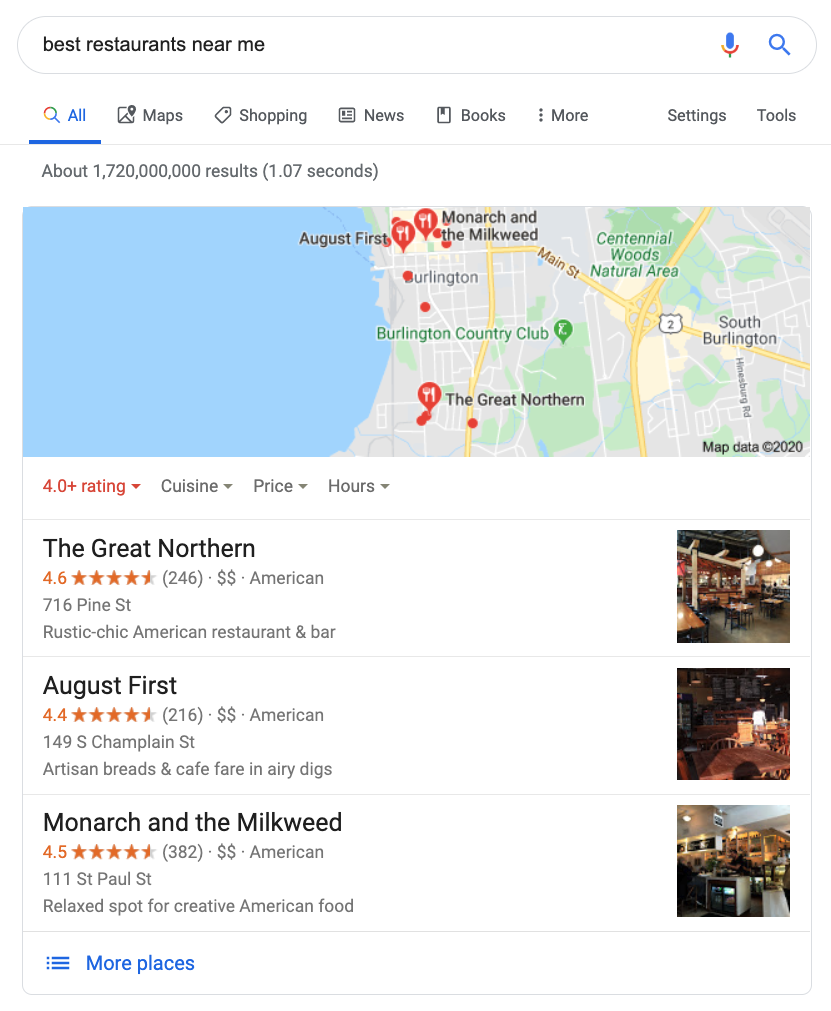What to Do When You Get Hit From Behind in a Car Accident
You’re cruising along, minding your own business, when suddenly, WHAM! You’re hit from behind by another car. It’s a jarring experience that can leave you feeling shaken and confused. What do you do now? Here’s a step-by-step guide to help you navigate the aftermath of a rear-end collision.
1. Pull Over and Stay Calm
First things first, pull over to the side of the road if possible. This will help prevent further accidents and give you a chance to gather your thoughts. Once you’re safely out of traffic, take a few deep breaths and try to stay calm. It’s natural to feel shaken after an accident, but panicking will only make things worse. Remember, being calm will help you think clearly and make the best decisions for yourself and your passengers.
If you’re injured or unable to move your vehicle, call 911 immediately. Otherwise, stay in your car and wait for the police to arrive. Leaving the scene of an accident is a crime, so don’t even think about it.
Once the police arrive, they will take down your information and the other driver’s information. They will also investigate the accident and determine who was at fault. Be sure to get a copy of the police report, as this will be important for your insurance claim.
While you’re waiting for the police, take some time to assess your injuries. Even if you don’t feel like you’re hurt, it’s important to get checked out by a doctor. Some injuries, like whiplash, may not show up right away. If you have any pain or discomfort, don’t hesitate to seek medical attention.
Once you’ve been checked out by a doctor and the police have finished their investigation, you can start the process of filing an insurance claim. Your insurance company will need to know the details of the accident, so be sure to provide them with all the information you have. You may also need to provide them with photos of the damage to your car.
Dealing with a car accident can be a stressful experience, but it’s important to remember that you’re not alone. There are people who can help you through this process, so don’t be afraid to reach out for assistance.
Car Accident Hit in the Back: What to Do
Being involved in a car accident is never a pleasant experience, but when you’re hit in the back, it can be particularly jarring. The force of the impact can leave you feeling dazed and confused, and the adrenaline pumping through your body can make it difficult to think clearly. However, it’s important to stay calm and take the following steps to ensure your safety and protect your rights.
Exchange Information With the Other Driver
Immediately after the accident, it’s crucial to exchange information with the other driver. This includes:
- Full name
- Contact information (address, phone number, email)
- Insurance information (company name, policy number)
- License plate number
- Make, model, and year of vehicle
If possible, take a picture of the other driver’s license and insurance card. This will help you document the information and prevent any disputes later on. Additionally, ask the other driver for a copy of their police report if one was filed.
Assess Injuries and Call for Help
Next, it’s important to check yourself and your passengers for injuries. Even if you don’t feel any pain immediately, it’s possible to have sustained hidden injuries. If you or anyone else is injured, call 911 immediately. The paramedics will assess the injuries and provide treatment as necessary.
Document the Scene
While you’re waiting for help to arrive, take some time to document the accident scene. This includes:
- Taking pictures of the damage to both vehicles
- Noting the location of the accident
- Observing any witnesses and getting their contact information
- Writing down a brief description of the accident
The more information you can gather at the scene, the better equipped you’ll be to file a claim with your insurance company and prove your case if necessary.
Report the Accident to Your Insurance Company
As soon as possible after the accident, report it to your insurance company. They will investigate the claim, determine who is at fault, and arrange for repairs or compensation.
Car Accident Hit in the Back
Oh, no! You’ve been hit from behind. It’s a jarring experience that can leave you feeling shaken and disoriented. But don’t panic. Here’s what you need to do after a car accident hit in the back:
Document the Scene
The first step after any car accident is to ensure the safety of yourself and any passengers. Once it’s safe to do so, grab your phone or camera and start documenting the scene. Take pictures of the damage to both vehicles, including close-ups of any dents or scratches. Also, take pictures of the scene of the accident and any visible injuries. If there are any witnesses, get their names and contact information.
It’s important to be thorough when documenting the scene of the accident. The more information you have, the easier it will be to file a claim with your insurance company and prove fault if necessary.
Exchange Information
Once you’ve documented the scene, exchange information with the other driver(s) involved in the accident. This includes your name, address, phone number, insurance information, and license plate number. It’s also a good idea to get the names and contact information of any witnesses.
If the other driver is being difficult or refuses to provide information, don’t hesitate to call the police. They can help you get the information you need and file a report.
Car Accident Hit in the Back: What to Do?
Being involved in a car accident can be a frightening and stressful experience. It’s especially jarring when you’re hit from behind, as you may not have time to react. If you find yourself in this situation, there are a few things you should do to protect your health and well-being.
Seek Medical Attention
Even if you’re feeling fine, it’s important to see a doctor after a car accident. Some injuries, such as whiplash, may not show up immediately. A doctor can evaluate you for any hidden injuries and provide treatment if necessary. Ignoring an injury could lead to more serious problems down the road.
Contact the Police
Reporting the accident to the police is important for several reasons. It creates a record of the accident that can be used for insurance purposes and legal proceedings. It also helps the police investigate the accident and determine who was at fault. If you don’t report the accident, you could be held liable for any damages or injuries.
Exchange Information
After the accident, be sure to exchange information with the other driver. This includes your name, address, phone number, insurance company, and policy number. You should also get the make, model, and license plate number of the other vehicle.
Take Photos
If possible, take pictures of the accident scene. This can help document the damage to your vehicle and the other vehicle. It can also help you remember important details about the accident.
Don’t Admit Fault
It’s important to be polite and cooperative with the other driver, but don’t admit fault for the accident. Even if you think you were at fault, it’s best to let the insurance companies and the police determine who was responsible.
Hire an Attorney
If you’ve been injured in a car accident, you may want to consider hiring an attorney. An attorney can help you get the compensation you deserve for your injuries and damages. They can also help you navigate the legal process and protect your rights.
Being Rear-Ended: What to Do Next
Getting rear-ended is a jarring experience—a moment of impact, followed by confusion and uncertainty. Understandably, you may not know what steps to take. But, by following these steps, you can protect yourself, your passengers, and your vehicle.
Pull Over
If possible, pull over to a safe location after the accident. This will allow you to assess the damage, exchange information with the other driver, and call the police if necessary.
Exchange Information
Once you’re in a safe location, exchange the following information with the other driver:
1. Name
2. Contact information
3. Insurance information
4. License plate number
5. Make and model of the vehicles involved
6. Take pictures of the damage to both vehicles.
Call the Police
If there are any injuries or significant damage to the vehicles, you should call the police. A police report can provide an official record of the accident, which can be helpful if there are any disputes later.
Contact Your Insurance Company
Report the accident to your insurance company as soon as possible. They will guide you through the claims process and help you get your vehicle repaired or replaced. It’s important to provide your insurance company with all the information you have about the accident, including the other driver’s information, the police report number (if there was one), and any photos of the damage.
Get Medical Attention
Even if you don’t feel injured, it’s important to get medical attention after a car accident. Some injuries, such as whiplash, may not show up immediately. A doctor can evaluate your injuries and make sure you’re okay.
Car Accident Hit in the Back: What to Do
If you’ve been in a car accident where you were hit in the back, you’re likely feeling shaken up and unsure of what to do next. Don’t worry, you’re not alone. Here are some steps to help you get through this difficult time:
Get a Copy of Your Medical Records
It’s important to get a copy of your medical records from any doctors or hospitals that treated you for injuries sustained in the accident. These records will provide a detailed account of your injuries and treatment, which will be essential if you decide to file a claim with your insurance company or the other driver’s insurance company.
- Contact the medical records department of each hospital or doctor’s office where you were treated. You can usually do this by phone, mail, or online.
- Provide your name, date of birth, and the dates of service for your treatments.
- Pay any required fees. The cost of medical records varies depending on the provider.
- Review your medical records carefully. Once you have your medical records, take some time to review them carefully. Make sure that all of your injuries are documented and that the treatment you received was appropriate.
Other Important Steps to Take After a Car Accident
In addition to getting a copy of your medical records, there are a few other important steps you should take after a car accident hit in the back:
- Call the police. Even if you don’t think you’re injured, it’s important to call the police and file a report. This will provide you with a record of the accident and help you protect your rights.
- Get the other driver’s information. This includes their name, address, phone number, and insurance information.
- Take pictures of the accident scene. This will help you document the damage to your car and the other driver’s car.
- Get witness information. If there were any witnesses to the accident, get their names and contact information.
- Contact your insurance company. You should report the accident to your insurance company as soon as possible. They will be able to help you file a claim and get your car repaired or replaced.
Car Accident Hit in the Back: Critical Steps and Considerations
Being rear-ended in a car accident can be a frightening and overwhelming experience. If you find yourself in this situation, it’s crucial to take swift and informed actions to protect your well-being and legal rights.
Seek Medical Attention
Your health and safety should be your top priority after any accident. Even if you don’t feel immediate pain, it’s imperative to seek medical attention promptly. Injuries from rear-end collisions can manifest themselves gradually, so it’s essential to rule out any underlying issues.
Exchange Information
Gather as much information as possible at the scene of the accident. Exchange contact details with the other driver(s) involved, including names, phone numbers, and insurance companies. Obtain the license plate numbers and make/model of all vehicles involved.
Document the Scene
If possible, take pictures of the accident scene, including the damage to your vehicle, the other vehicles involved, and any visible injuries. Take notes of the weather conditions, road conditions, and any other relevant details that may help in determining liability.
Report the Accident
Immediately report the accident to the police. They will create a police report that will serve as an official record of the incident and can be useful for insurance claims and legal proceedings.
Contact Your Insurance Company
As soon as possible after the accident, contact your insurance company to report the incident. They will guide you through the claims process and start the investigation into the accident.
Consider Hiring an Attorney
In cases where you have sustained serious injuries or the other driver is disputing fault, hiring an attorney to represent your interests may be prudent. An attorney can help you navigate the legal complexities, build a strong case, and maximize your compensation for medical expenses, lost wages, and other damages.
Common Injuries in Rear-End Accidents
Rear-end collisions can cause a wide range of injuries, including whiplash, head injuries, neck pain, back pain, and soft tissue injuries. Symptoms may not always appear immediately, so it’s important to monitor your condition and seek medical attention if any pain or discomfort arises.
Insurance Disputes and Liability
Determining fault in rear-end accidents can be straightforward, as the driver who strikes the vehicle from behind is often presumed to be at fault. However, there may be exceptions, such as if the rear-ended driver braked suddenly or changed lanes without signaling.
Financial Compensation
Depending on the severity of your injuries and the fault of the other driver, you may be entitled to compensation for medical expenses, lost wages, pain and suffering, and other damages. Your attorney can help you determine the fair value of your claim and negotiate with the insurance company on your behalf.
Preventive Measures
While rear-end collisions can happen unexpectedly, there are steps you can take to reduce your risk. Maintain a safe following distance, pay attention to the road, and avoid distractions such as texting or talking on the phone while driving.




Leave a Reply